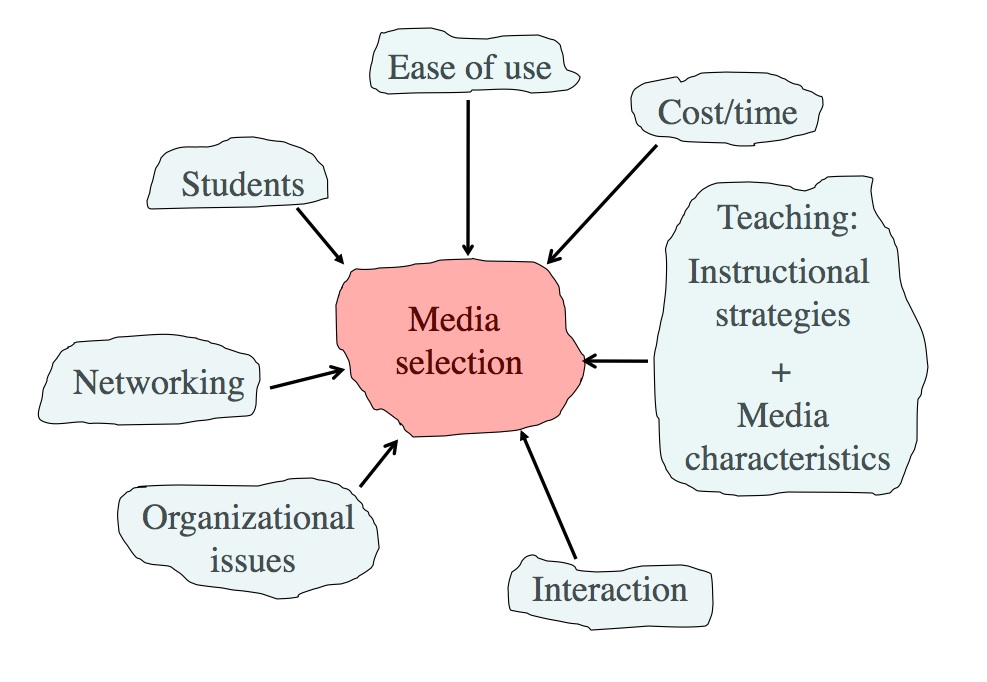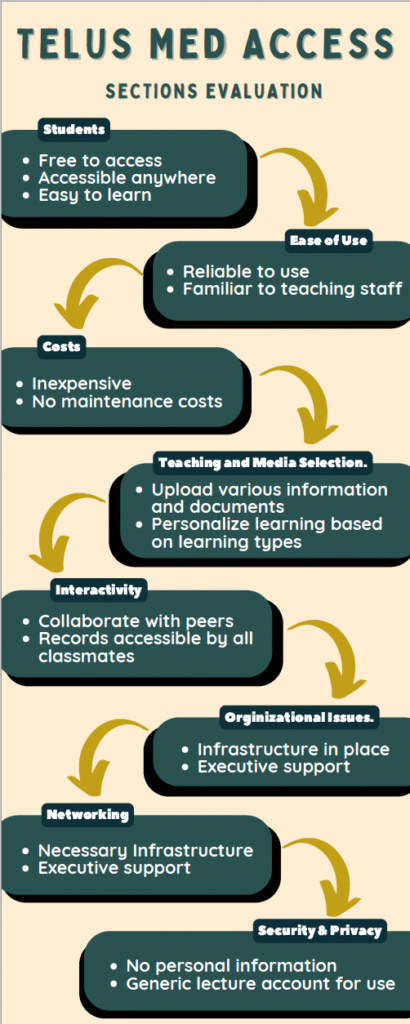In the department of Health Information Science technology and media are commonly used in teaching. Because of this, it is important to have models like SECTIONS to help teachers select the appropriate technology for use in the classroom setting (Sarah, 2015). In doing so, teachers can effectively teach diverse sets of learners with varying needs (Sarah, 2015).

Real-World Application of SECTIONS
The SECTIONS model has clearly been utilized in the department of Health Information Science. In one class, in particular, students were to learn how to use an electronic health record (EHR) and how to upload content to the platform. To facilitate this learning, Telus Med Access (an online EHR) was selected. This technology was accompanied by the use of tutorial videos, quick reference guides, and supplemental readings.

S & E (Students & Ease of Use)
For students, this technology was appropriate as it was free to access; accessible anywhere with an internet connection (as it was an online application); and easy to learn as students had already been introduced to Med Access in previous classes. This technology was also reliable and easy for teachers to use as the platform was maintained by Telus and the teachers had previous exposure to the application in the clinical setting.
C (Costs)
In comparison to other online platforms, Telus Med Access was inexpensive and had no maintenance costs. The department only needed to pay an annual licensing fee in order to have access to the application. Further, as the application was owned by Telus, they were responsible for the development, delivery, and support – not the department (Sarah, 2015).
T & I (Teaching and Media Selection & Interactivity)
With Telus Med Access, students were able to access various sections of the electronic record and upload information and documents based on their determined test patient. Because of this, students were able to personalize their learning based on their learning type and create test environments and scenarios that supported this learning. Additionally, the application allowed students to work alone or collaborate with peers when creating an electronic record. This record was then saved and uploaded to the EHR where all classmates could access and interact with the new record.
O & N (Organizational Issues & Networking)
As the department already had the infrastructure in place to support the technology as well as the executive support to adopt this technology, implementing Telus Med Access was possible. However, while the application does not support networking outside of the classroom, the platform did allow students to network with other classmates as they collaborated on creating new health records and patient profiles.
S (Security & Privacy)
To access the platform, students logged on with a lecture username and password (that was provided to all students at the start of the course). This was done intentionally, so students did not have to create personal accounts or upload any personal information making the platform secure and private to use (as there may be security/privacy concerns due to it being a cloud-based service).

Because of the evaluation of Telus Med Access using the SECTIONS model, the health information department was able to successfully select a technology that would enhance student learning.
![Classroom Management] Implementing Tech Tools without the Headaches | Edmentum Blog](https://khopper.opened.ca/wp-content/uploads/sites/4587/2022/06/image-5.jpeg)
References
Bates, T. (2015). Deciding on Appropriate Media for Teaching and Learning. Retrieved from https://www.tonybates.ca/2015/01/28/deciding-on-appropriate-media-for-teaching-and-learning/
Edmentum. (2016). Implementing Tech Tools Without the Headaches. Retrieved from https://blog.edmentum.com/classroom-management-implementing-tech-tools-without-headaches
eHealth Saskatchewan. (n.d.). Standardized Referral Template in TELUS Health Med Access. Retrieved from chrome-extension://efaidnbmnnnibpcajpcglclefindmkaj/https://www.ehealthsask.ca/services/Referral-and-Consult-Tools/Documents/Set-up-Instructions-for-MedAccess-Generic-Referral-Template.pdf
Sarah. (2015, October 4). The SECTIONS Model. https://www.youtube.com/watch?v=cwmo2NLBbkU&t=62s
Leave a Reply
You must be logged in to post a comment.